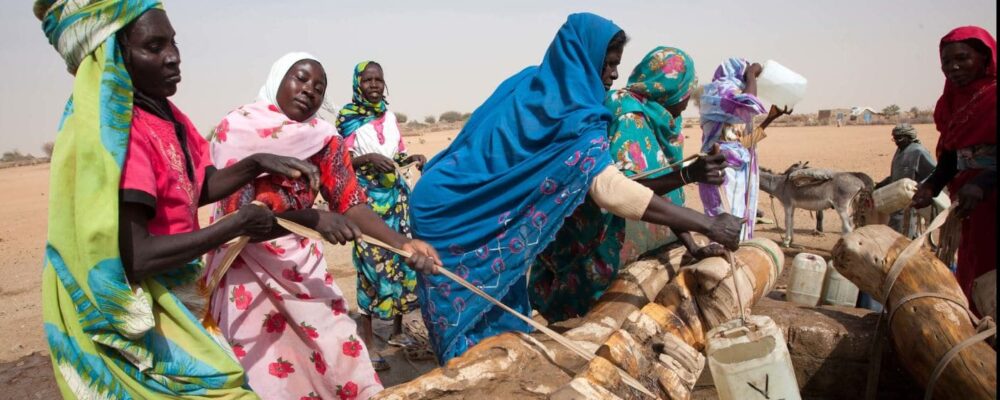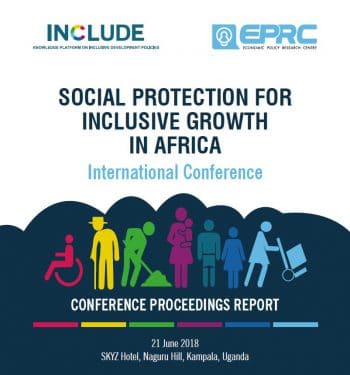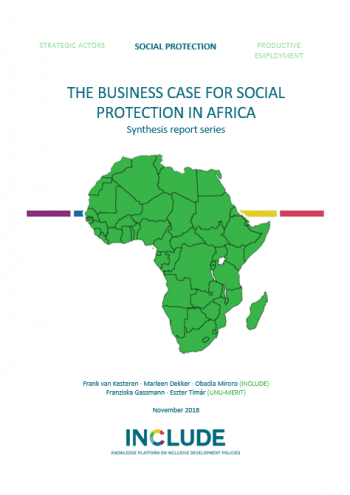
Update on COVID-19 in Africa
In a single week between the first and second drafts of this news item, the number of confirmed coronavirus cases in Africa has risen by more than 50,000, from 190,000 on June 8th to over 240,000 on June 15th. To date, Africa has reported surprisingly low infection and mortality rates linked to coronavirus. Low-income and lower-middle income countries make up almost half of the global population but have, until now, accounted for just 2 percent of the global COVID-19 death toll. Subsequently, it has been frequently cited that Africa’s youthful population, along with strict and early lockdown measures in many countries, has led the continent to escape a disastrous pandemic, spurring arguments to relax restrictions, reopen borders and resume business.
A recent World Bank report offers contrastingly sober predictions of shifting epicentres and increasing mortality across the developing world. Using simulations based on local demography and environmental factors, which account for COVID-specific transmission, age and comorbidity patterns, the report suggests that the discrepancy in mortality between rich and poor countries has been vastly misjudged. It highlights that, despite Africa’s population structure with its significant youth bulge, developing countries actually hold twice as many people aged 60+ as high-income countries, because of their enormous overall populations and significant aging in recent years. The report concludes that the seemingly low death toll in low-income countries (majorly in Sub-Saharan Africa) is partly due to unequal data quality, but mostly because the pandemic has not yet run its full course in these parts of the world.
The narrative around lockdowns has therefore increasingly swung into a dilemma between causing economic stagnation, poverty and starvation on the one hand, and the mass spread of COVID-19 on the other. The responses to this dilemma have varied greatly. Some African governments (e.g. Nigeria and South Africa) are gradually allowing their economies to open up in order to restart their economies and mitigate the food and income crises which social protection systems have been unable to abate. Others (e.g. Kenya and Uganda) remain under tighter lockdowns until greater testing can provide greater certainty, and a third group (e.g. Tanzania and Burundi) have maintained a more open approach throughout. It is yet to be seen which strategies will yield the best outcomes for their populations, and which (new) inequalities will emerge as a result.
The Evolution of Social Protection during COVID-19
Social protection and social safety net programs – especially cash-based programs – have been promoted worldwide to mitigate the fall-out of lockdown measures, especially for those without the luxury of working from home or the ability to self-isolate. Not only governments have stepped up: GiveDirectly has pledged more funds to its UBI program in response to COVID-19, and even (extra-)ordinary citizens have been distributing food in Nigeria. The what, where, who and how of social protection is being scrutinised in order to reevaluate its purpose and increase its effectiveness.
This edition of INCLUDE’s COVID-19 news item zooms in on recent social protection measures in Africa and what these (could) mean for vulnerable groups of citizens. It reflects on how social protection plays an important role in the immediate response as well as longer-term strategies to reduce poverty and inequality and to mitigate against the impacts of future crises.
Pandemic Responses
- As of June 12, 49 African countries had introduced COVID-19 related social protection measures, compared to just 6 countries on March 27. The design and structure of these measures (particularly the type, timing and targeting) have varied greatly across the continent. For example, the governments of Namibia and South Africa have implemented emergency grants, Burkina Faso announced cash transfers in early April, and Ghana implemented utility waivers for water and electricity.
- Despite the apparent effort and improvement, just 2% of the population had received a COVID-19 related cash transfer by June 12th. Moreover, spending per capita on these measures was just $3 in Sub-Saharan Africa compared to, for example, $42 in Latin America, and $58 in Eastern Europe and Central Asia. This is insufficient to compensate for the job and income losses experienced by millions of vulnerable people due to the global crisis.
- Social assistance, consisting of social cash transfers or other non-contributory measures such as utility waivers, has made up 83% of the social protection response to COVID-19 in Africa, higher than any other region. Social insurance, entailing health insurance, unemployment benefits or other contributory measures, and labour market mechanisms, including wage subsidies, hazard pay or work time support and paid leave, have been less common.
- Existing government social protection policies form the foundation for additional responses to COVID-19. This has made successful implementation largely contingent on the coverage and adequacy of the systems that are already in place, which vary greatly. For example, the Somalian government had announced its World Bank funded Shock Responsive Social Safety Net in September 2019, which was timely launched in April 2020. Governments across the continent are grappling with the challenge of rapidly expanding existing systems, often not taking into account gender, as women around the world are most vulnerable to risk in health care jobs or forced lockdown situations.
- Financial constraints of African governments play a major role in the extent to which social protection can be enhanced (in terms of expanding coverage, adequacy or duration). Limited fiscal space has been created through a triple shock involving high debt, constrained foreign aid and a contraction in domestic production. Richer countries and donor organisations should step in to help fill the estimated 2,5 trillion USD needed worldwide to provide sufficient protection for the poor and vulnerable.
The emerging challenges of social protection during COVID-19
Timely and safe delivery of social assistance is another major challenge. The provision of social protection comes with additional risks for those delivering and receiving it that need to be mitigated, as shown in this video of the Cash and Learning Platform and its CVA-guidelines. During the 2014-2016 Ebola outbreak in Sierra Leone, health care workers lacked sufficient hazard pay which led them to strike. Mobile money is seen as a low-risk method of delivering cash grants in the context of a pandemic, providing that cashing out is done safely. In a webinar by the Betterthancash Alliance, experts of the government and a telecom provider gave insights into how they collaborated with civil society actors to introduce and expand mobile money cash transfers and make sure health care workers were paid sufficiently.
Apart from highlighting opportunities for partnerships in the response to COVID-19, this reveals structural problems regarding decent wages and working conditions for health workers on the front lines of this pandemic, as medical personnel strikes have again been reported in different countries. In the current pandemic, some multinational telecom providers are facilitating the financial inclusion necessary for the scaling up of cash transfer programs, among others in Kenya and the kingdom of Eswatini.
Impacts on vulnerable groups
It has proven a challenge for governments to introduce or scale up social protection to meet the needs of people who were already vulnerable as well as those who have been made vulnerable due to this crisis. This includes young workers, the elderly, informal workers, people with disabilities, rural farmers and women. Women have been placed significantly at risk, both economically and socially, through lockdowns due to their overrepresentation in health care, domestic roles (such as home schooling) and informal work, either paid or unpaid. Various policy briefs have offered recommendations for how to make social protection responses more gender-sensitive.
Emergency food and cash measures are widespread, but they do not yet reach informal workers like street vendors or waste pickers that have been directly affected by public health measures that often expose them to police harassment, health risks and loss of livelihoods. Informal workers are often left behind as they are not accounted for in formal social protection, and not targeted by measures for the extreme poor. This exemplifies the need to include the voices of informal workers and those who are left behind in shaping adequate measures.
Africa is often portrayed as a young continent with its elderly population mostly concentrated in villages, where the virus would not reach so easily. This is a potentially dangerous simplification if it informs social policy. COVID-19 poses higher health risks for elderly, especially those with pre-existing (respiratory) conditions. Furthermore, a lockdown may impose increased vulnerabilities on elderly and disabled persons who depend on informal care, informal work or social networks. Social pensions and other targeted programs for elderly and disabled, including health insurance, typically have low coverage in many African countries but could be expanded.
Impacts on inclusive development
The sudden need for expansion of social protection worldwide presents the mixed uncertainty of a challenge and opportunity to create social protection architecture that will last beyond COVID-19 and prevent the loss of lives and livelihoods in future crises. This calls for more flexible social protection programs which can be scaled up and adapted during emergencies, more inclusive modes of targeting and delivery, and more sustainable modes of financing. The argument is made for a human rights-based, instead of charity-based, system of social protection to form the legal foundations of a quick response in a crisis.
The social protection responses of African governments so far have been leaning heavily on the social assistance side. Additional measures to ensure universal access to health care, safety nets in case of unemployment or other livelihoods shocks and working conditions including personal protection equipment and paid sick leave are necessary for a more resilient economy. This entails using the lessons of COVID-19 and building a more inclusive system of social protection that acknowledges vulnerabilities in all layers of society.
Some of the implementation challenges of sustainable social protection can be met by forming partnerships between government, civil society and NGOs and private sector actors such as banks, telecom providers and other companies, to build on knowledge, funds and networks and provide more cohesive and effective responses. Humanitarian actors, who are often experienced with cash grants, emergency registers and delivery, systems could complement national social protection strategies. More comprehensive social protection policies coordinated by governments and supported by civil society actors can be a first step to governing with compassion and building back better.
Access and abundance of knowledge on ongoing social protection and cash-based interventions:
- www.ugogentilini.net
- www.calpnetwork.org
- www.socialprotection.org – COVID-19 Webinar series – Social protection Mini-course
- www.wiego.org
- World Bank dedicated page to Social Protection and COVID-19
- UNDP Social Assistance in Africa Data Platform
Read more about social protection:
- INCLUDE synthesis report Social protection for inclusive growth
- SASPEN Network
- The African Platform for Social Protection
We are open to any input and suggestions that could contribute to this debate. We invite you to send us an email.

